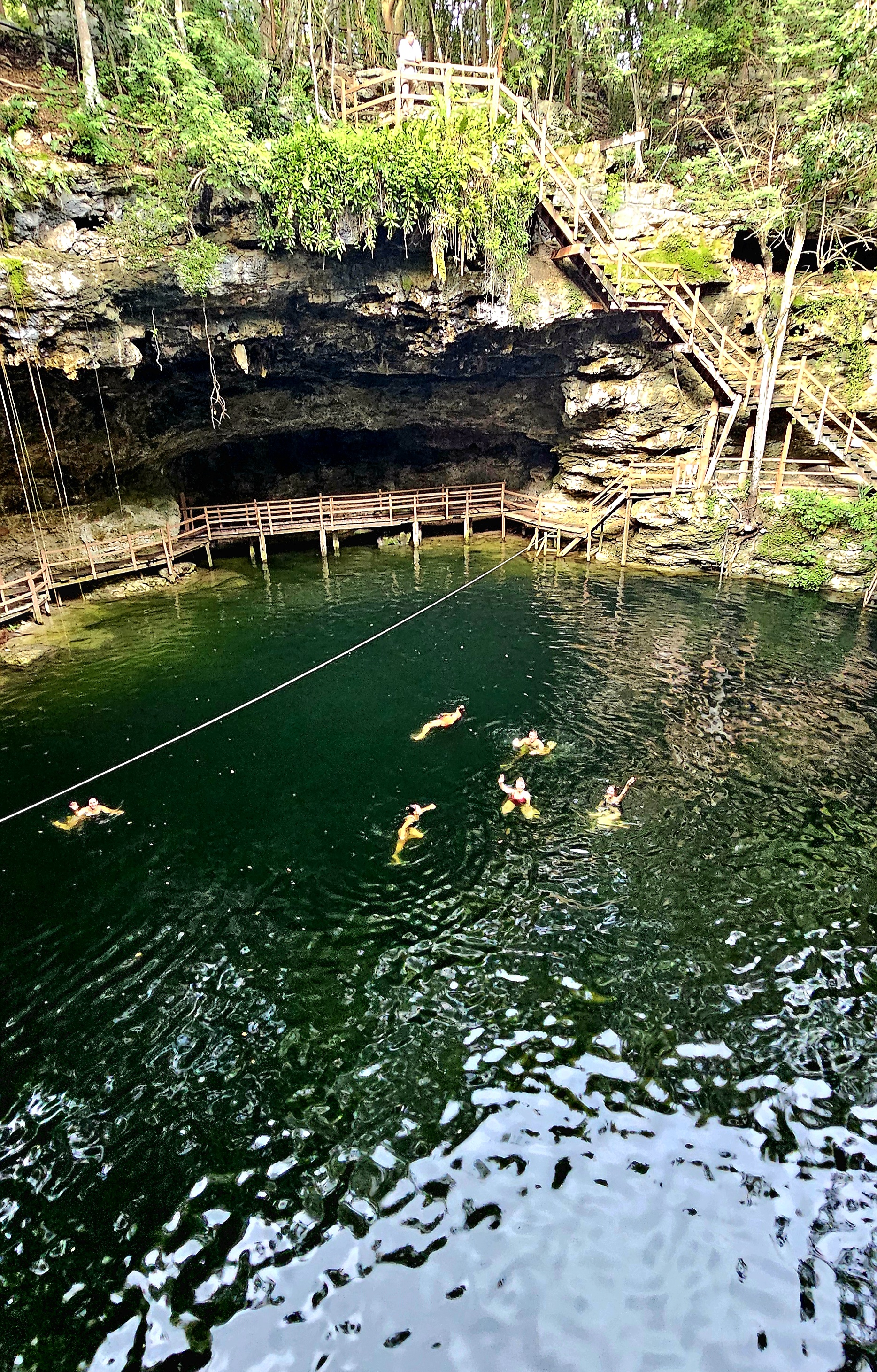

During your tour today we will visit one of the new 7 world wonders, Chichen Itza, the archeological site.
Step into the awe-inspiring world of Chichén Itzá, one of the New Seven Wonders of the World. This ancient Maya city is home to the iconic Kukulkán Pyramid, an architectural masterpiece that showcases the Maya’s incredible knowledge of astronomy and engineering. As you walk through the expansive site, discover sacred temples, the impressive ball court, and intricate stone carvings that tell stories of a powerful civilization. A visit to Chichén Itzá is a journey back in time—and a must-see highlight of any trip to the Yucatán.
A cenote is a natural sinkhole filled with freshwater, formed when limestone bedrock collapses to reveal the groundwater beneath. These magical pools, found mainly in Mexico’s Yucatán Peninsula, were considered sacred by the ancient Maya. After visiting Chichen Itza you will go to a cenote where you can have a refreshing dip in the water.

Discover the charm of Valladolid, a picturesque colonial town in the heart of the Yucatán Peninsula. In just two hours, you can wander through its colorful streets, admire the 16th-century San Servacio Cathedral, and soak up the vibrant atmosphere of the main square. Explore local boutiques and artisan shops for handmade crafts, or savor a traditional snack like marquesitas or panuchos at one of the nearby cafés. With its rich history, elegant architecture, and welcoming vibe, Valladolid offers the perfect cultural pause on your journey.
